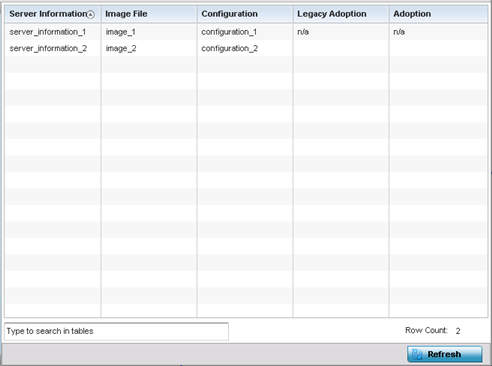Supported access points can use internal or external DHCP server resources to provide the dynamic assignment of IP addresses to requesting clients. DHCP is a protocol that includes IP address allocation and delivery of host-specific configuration parameters from a DHCP server to a host. Some of these parameters are IP address, gateway and network mask.
The DHCP Options screen provides the DHCP server name, image file on the DHCP server, and its configuration.
To view a network's DHCP Options:

| Server Information | Displays the DHCP server hostname used on behalf of the access point. |
| Image File | Displays the image file name. BOOTP or the bootstrap protocol can be used to boot diskless clients. An image file is sent from the boot server. The file contains the operating system image. DHCP servers can be configured to support BOOTP. |
| Configuration | Displays the name of the configuration file on the DHCP server. |
| Legacy Adoption | Displays legacy (historical) device adoption information on behalf of the access point. |
| Adoption | Displays pending (current) adoption information on behalf of an access point. |